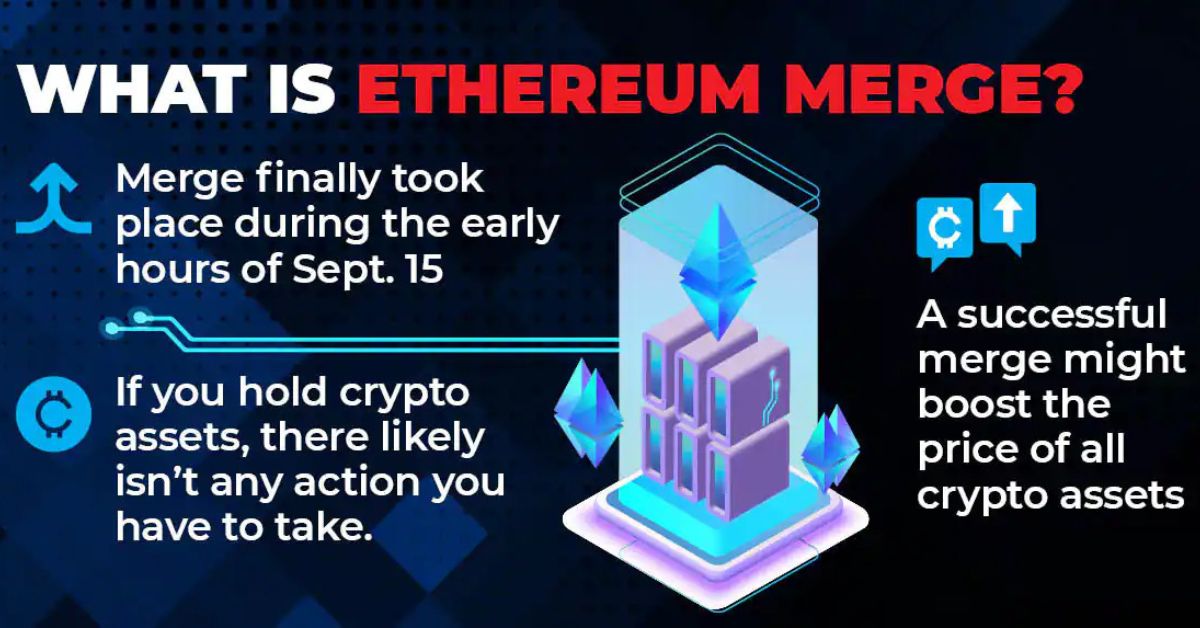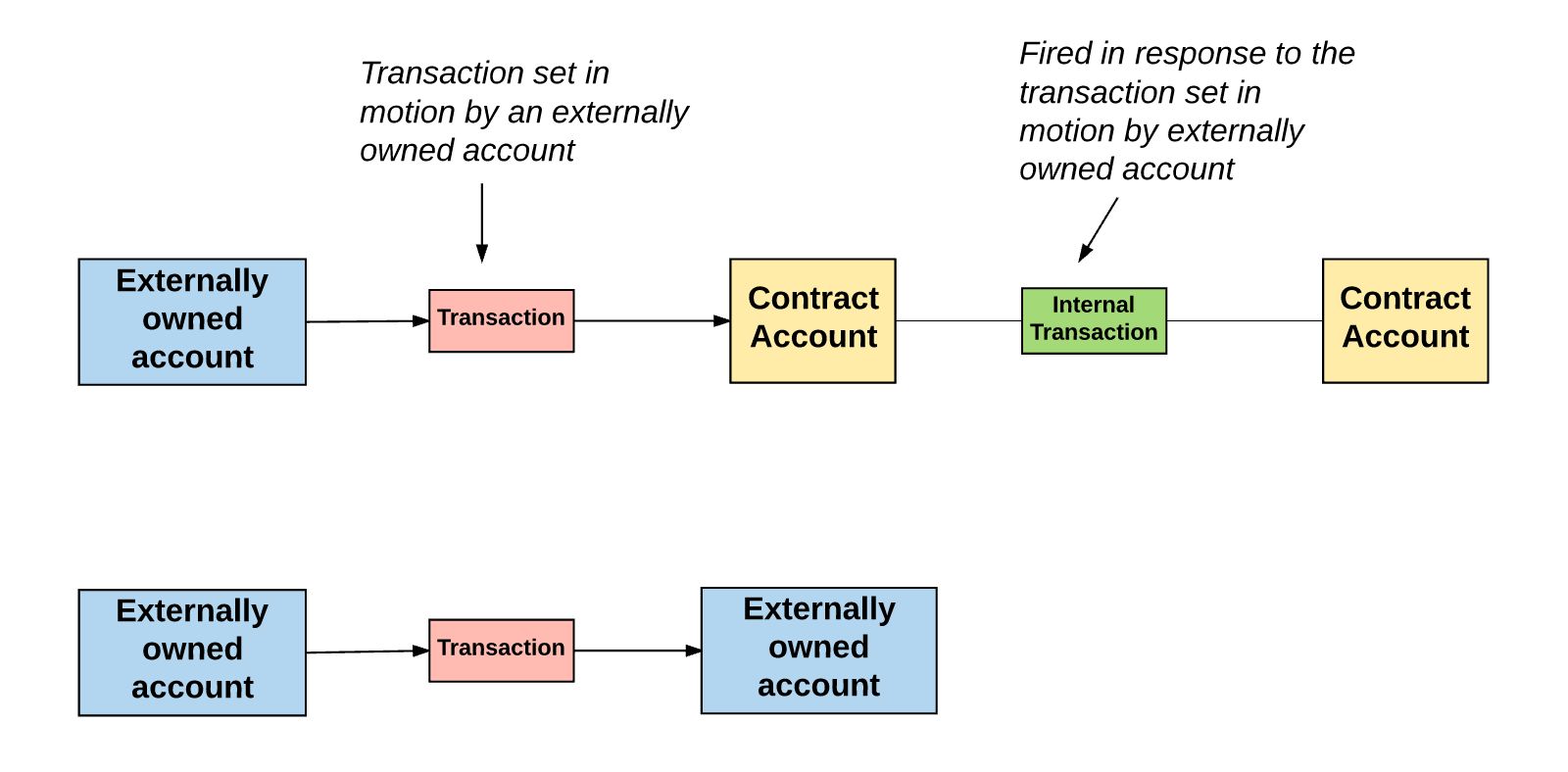Introduction
Welcome to the world of Ethereum staking! As the cryptocurrency landscape continues to evolve, Ethereum has emerged as one of the leading digital assets, capturing the interest of investors and enthusiasts alike. Now, with the recent Ethereum 2.0 upgrade, a new method of transaction validation called Proof of Stake (PoS) has been introduced, offering individuals the opportunity to stake their Ethereum and earn rewards.
But you may be wondering, what exactly does it mean to stake Ethereum? How much Ethereum do I need to get started? And what are the potential benefits and risks associated with Ethereum staking?
In this article, we will provide you with a comprehensive overview of Ethereum staking and address these questions and more. Whether you’re a seasoned crypto investor or just getting started, this guide will equip you with the necessary information to make an informed decision about staking your Ethereum.
Before we dive into the details, it’s important to note that Ethereum staking involves locking up a certain amount of Ethereum to support the network’s operations. In return, participants are rewarded with additional Ethereum tokens for their contribution.
Now, let’s explore the world of Ethereum staking and discover how you can become a part of this exciting ecosystem.
Overview of Ethereum Proof of Stake (PoS)
Proof of Stake (PoS) is a consensus mechanism that Ethereum is transitioning to as part of its Ethereum 2.0 upgrade. It is a departure from the current Proof of Work (PoW) model, which relies on a computational puzzle-solving process to validate transactions and secure the network. With PoS, the validation of transactions is instead based on the concept of “staking” Ethereum.
Staking Ethereum involves participants locking up a certain amount of their Ethereum holdings in a wallet as a form of collateral. These participants, known as validators, are responsible for proposing and validating new blocks on the Ethereum blockchain. The likelihood of being chosen as a validator to propose a new block is directly proportional to the amount of Ethereum staked. This means that the more Ethereum you stake, the higher the chance of being selected as a validator.
The transition to PoS has several benefits for the Ethereum network. Firstly, it reduces the energy consumption required for transaction validation, making Ethereum more environmentally friendly compared to PoW-based cryptocurrencies like Bitcoin. Additionally, it mitigates the centralization risks associated with large mining operations, as PoS allows anyone with a minimum amount of Ethereum to participate in the validation process.
One of the primary goals of the Ethereum 2.0 upgrade is to enhance the network’s scalability. With PoS, Ethereum aims to achieve a higher transaction throughput by introducing shard chains. These shard chains divide the Ethereum network into smaller pieces, or shards, allowing for parallel processing of transactions. Validators are assigned to different shards, enabling simultaneous processing of multiple transactions, thus increasing the overall capacity of the Ethereum network.
Another important aspect of PoS is the concept of finality. In PoW, transactions are considered “confirmed” after a certain number of block confirmations. However, with PoS, finality is achieved much faster and with lower resource requirements. Once a block is confirmed by a supermajority of validators, it becomes finalized, meaning that the included transactions are irreversible and fully settled.
Overall, the transition to Proof of Stake represents a significant milestone for Ethereum, offering scalability, energy efficiency, and broader participation in the network’s decision-making process. Now that we have an understanding of the PoS mechanism, let’s explore the benefits of staking Ethereum in more detail.
Benefits of Staking Ethereum
Staking Ethereum offers a range of benefits for participants looking to actively engage in the Ethereum network. Let’s explore some of the advantages of staking Ethereum:
1. Earn Passive Income: One of the primary benefits of staking Ethereum is the opportunity to earn passive income. Validators who stake their Ethereum have the chance to earn rewards in the form of additional Ethereum tokens. The more Ethereum you stake, the higher your potential earnings.
2. Support the Network: By staking Ethereum, you actively contribute to the security and decentralization of the Ethereum network. Validators play a crucial role in maintaining the integrity of the blockchain by validating transactions and proposing new blocks. This support helps ensure the smooth operation and stability of the Ethereum ecosystem.
3. Potential for Price Appreciation: As Ethereum continues to attract attention and adoption, there is the potential for the price of Ethereum to appreciate over time. By staking Ethereum and holding it for the long term, participants not only earn rewards but also have the opportunity to benefit from any price appreciation that may occur.
4. Early Access to New Features: As Ethereum evolves, new features and upgrades will be introduced. Validators who actively participate in staking may have early access to these new features, giving them a competitive advantage in the Ethereum ecosystem.
5. Diversify Your Crypto Portfolio: Staking Ethereum provides an opportunity to diversify your cryptocurrency portfolio beyond just holding Ethereum. By staking, you are allocating a portion of your digital assets to earn rewards, potentially reducing the concentration of risk in a single cryptocurrency.
6. Engage in Ethereum Governance: Validators in the Ethereum network have the ability to participate in the governance process, which involves voting on proposals and decisions that affect the future direction of Ethereum. By staking Ethereum, you have a stake in the decision-making process and can actively contribute to shaping the future of the network.
While staking Ethereum offers numerous benefits, it’s important to consider certain factors before diving into the world of Ethereum staking. In the next section, we will explore these factors in detail to help you make an informed decision about staking your Ethereum.
Factors to Consider Before Staking Ethereum
Before you decide to stake your Ethereum, there are several important factors to consider. Let’s take a look at some key considerations:
1. Risk Tolerance: Staking Ethereum involves locking up your funds for a certain period. This means you won’t have immediate access to your staked Ethereum. Consider your risk tolerance and assess whether you are comfortable with the potential inability to access your funds for an extended period.
2. Technical Knowledge: Staking Ethereum requires some technical knowledge to set up a staking node and maintain its proper functioning. Ensure that you have a good understanding of the technical requirements, or consider joining a staking pool where you can stake Ethereum without the need for extensive technical expertise.
3. Network Participation: In order to stake Ethereum, you need to ensure that you have a reliable and stable internet connection. Moreover, you must be comfortable with leaving your computer or staking hardware running continuously to support the network’s operations.
4. Minimum Staking Amount: Different staking platforms or protocols may have different minimum staking requirements. Make sure to research and understand the minimum amount of Ethereum required to participate in staking. This will ensure that you meet the eligibility criteria and can actively stake your Ethereum.
5. Time Commitment: Staking Ethereum requires a certain level of commitment in terms of time and attention. Validators are expected to actively monitor their nodes, update software, and respond to network-related issues promptly. Assess the time commitment required and ensure that you have the necessary resources to dedicate to staking Ethereum.
6. Potential Rewards and Returns: While staking Ethereum offers the potential for passive income through rewards, it’s important to understand that the rewards may vary depending on factors such as network participation and overall staking volume. Research and analyze the potential returns from staking Ethereum to align your financial goals and expectations.
7. Regulatory Considerations: The regulatory landscape surrounding staking may vary depending on your jurisdiction. Ensure that you are aware of the legal and tax implications of staking Ethereum in your country or region.
8. Future Upgrades and Changes: Ethereum is an evolving ecosystem, and there may be future upgrades and changes that could impact the staking process. Stay informed about upcoming updates and modifications to ensure that you are aware of any changes that may affect your staking experience.
Considering these factors will help you make an informed decision about whether staking Ethereum is the right choice for you. Now, let’s explore the minimum amount required for Ethereum staking.
Minimum Amount Required for Ethereum Staking
The minimum amount required for Ethereum staking can vary depending on the staking platform or protocol you choose. Ethereum 2.0 has introduced a minimum staking threshold of 32 ETH, which is the minimum amount required to become a validator and participate in the staking process.
With 32 ETH, you can set up your own staking node, propose and validate blocks, and earn rewards for your contribution to the network. It’s important to note that this minimum threshold is set at the protocol level and is not determined by external factors.
If you do not have 32 ETH, there are alternatives available. Some staking platforms or services allow users to pool their funds together to meet the minimum staking requirement. In such cases, you can contribute a smaller amount of Ethereum to a staking pool, and collectively the pool participants reach the minimum threshold for staking.
Pooling your Ethereum with other users helps to distribute the risks and rewards of staking, but it also means that you will receive a proportionate share of the rewards based on your contribution. However, it’s important to carefully evaluate the reputation, security, and fees associated with the staking platform or pool you choose.
It’s worth noting that staking a smaller amount of Ethereum may result in lower potential rewards compared to staking the full 32 ETH. The rewards are typically proportional to the amount staked, so staking a larger sum of Ethereum may yield higher returns.
It’s also essential to consider the potential for Ethereum’s value appreciation when deciding on the amount to stake. While staking Ethereum allows you to earn passive income through rewards, the potential for price appreciation can add significant value to your staked Ethereum over time.
Before staking any amount of Ethereum, it’s crucial to thoroughly research and understand the staking requirements and rewards structure of the chosen platform or protocol. By doing so, you can make an informed decision that aligns with your financial goals and risk tolerance.
Now that we’ve discussed the minimum staking requirement for Ethereum, let’s explore the potential returns and rewards you can expect from staking Ethereum.
Potential Returns and Rewards from Ethereum Staking
Staking Ethereum offers the potential to earn returns and rewards in the form of additional Ethereum tokens. The specific rewards you can expect from staking Ethereum may vary depending on the staking platform, network participation, and overall staking volume. Let’s explore the potential returns and rewards associated with Ethereum staking:
1. Staking Rewards: The primary source of returns from Ethereum staking comes in the form of staking rewards. Validators who actively participate in the staking process by locking up their Ethereum and performing their duties receive rewards for their contribution. These rewards are typically a percentage of the staked Ethereum and are distributed regularly according to the staking protocol’s rules.
2. Validators’ Earnings: Validators are responsible for proposing and validating new blocks on the Ethereum blockchain. In addition to the staking rewards, validators can receive additional earnings from transaction fees included in the blocks they validate. The more Ethereum staked, the higher the potential for earning transaction fees.
3. Network Participation Incentives: Some staking platforms or protocols may offer additional incentives or bonuses to encourage active network participation. These incentives can include a bonus percentage on staking rewards or priority access to participate in network governance decisions.
4. Potential Price Appreciation: Beyond the rewards earned from staking, staked Ethereum also has the potential to appreciate in value over time. As the demand for Ethereum grows and the ecosystem develops, the price of Ethereum may rise, leading to an increase in the value of your staked assets.
It’s important to note that the specific returns and rewards you receive will depend on various factors, including the network’s staking rate, network fees, and market conditions. Additionally, staking rewards are subject to the rules and parameters set by the staking protocol or platform you choose.
When staking Ethereum, it’s essential to have realistic expectations about the potential returns. While staking offers the opportunity for passive income, the exact amount received can vary over time. It’s recommended to consider staking Ethereum as a long-term investment strategy rather than seeking short-term gains.
Furthermore, it’s crucial to evaluate the risks associated with potential returns. Staking Ethereum involves locking up your funds and exposing them to market volatility and network risks. Ensure that you have a clear understanding of the risks involved and only stake an amount of Ethereum that you are comfortable with.
Before staking Ethereum, research different staking platforms or protocols, evaluate their rewards structure, and consider the potential returns along with the associated risks. By doing so, you can make an informed decision and optimize your earnings from staking Ethereum.
Next, let’s explore the available staking options for different budgets to accommodate a wide range of participants in the Ethereum staking ecosystem.
Staking Options for Different Budgets
Staking Ethereum is not limited to individuals with large amounts of Ethereum to stake. There are staking options available for different budgets, allowing a wide range of participants to get involved in the Ethereum staking ecosystem. Let’s explore some staking options based on different budget sizes:
1. Full Validator: For those with a budget of at least 32 ETH, becoming a full validator is an option. By staking the minimum requirement, you can set up your own staking node and directly participate in the Ethereum staking process. This option provides complete control over your staked Ethereum and the potential to earn full rewards.
2. Shared Validator: If you have less than 32 ETH but still want to stake Ethereum, joining a shared validator service or staking pool is a viable option. In a shared validator model, multiple participants pool their Ethereum together to meet the minimum staking requirement and share the rewards proportionately. This allows you to stake a smaller amount of Ethereum and still earn rewards based on your contribution.
3. Staking Platform Participation: Some staking platforms or protocols allow users to participate in staking with a much lower minimum requirement than 32 ETH. They offer the option to stake as little as 0.1 ETH or even lower. While the potential rewards may be lower with smaller stakes, this option provides a lower barrier to entry and allows individuals with smaller budgets to participate in Ethereum staking.
4. Staking Services: If you prefer a more hands-off approach and do not want to set up your own staking infrastructure, you can utilize staking services provided by various platforms or exchanges. These services allow you to delegate your Ethereum to a staking pool operated by the platform, and they handle the staking process on your behalf. This option is suitable for those who want to stake Ethereum without the technical complexities of running their own staking node.
Regardless of your budget, it’s important to conduct thorough research and due diligence when choosing a staking option or service. Consider factors such as reputation, security, fees, and the transparency of the platform or pool you decide to stake with. Security should be a top priority, as you want to ensure the safety of your staked Ethereum.
It’s also worth noting that you can start small and gradually increase your stake as your budget allows. You can initially stake a smaller amount and later add to your staked Ethereum as you accumulate more funds.
Remember, the specific rewards earned from staking will depend on various factors, including network participation, staking volume, and market conditions. Carefully evaluate your budget and desired level of participation to choose the staking option that aligns with your goals and requirements.
Now that we’ve explored the different staking options for various budgets, let’s delve into the risks and considerations associated with staking Ethereum.
Risks and Considerations of Staking Ethereum
While staking Ethereum offers the potential for rewards and passive income, it is important to consider the associated risks and potential downsides. Here are some risks and considerations to keep in mind when staking Ethereum:
1. Volatility: Like any investment, Ethereum is subject to price volatility. The value of Ethereum can fluctuate significantly, which can impact the overall value of your staked assets. It’s important to be prepared for potential price fluctuations and to assess your risk tolerance before staking Ethereum.
2. Lock-Up Period: When staking Ethereum, you are required to lock up your funds for a certain period. The length of the lock-up period can vary depending on the staking protocol or platform you choose. During this period, you will be unable to access or use the staked Ethereum. Assess your need for liquidity and consider the time commitment involved in staking before deciding to lock up your Ethereum.
3. Technical Risks: Staking Ethereum involves setting up and maintaining a staking node or utilizing a staking service. This can pose technical risks, including potential vulnerabilities or risks associated with running the staking software. Ensure you have a strong understanding of the technical requirements and consider the potential risks before proceeding with staking.
4. Slashing Risk: Slashing is a penalty imposed on validators for malicious or negligent behavior on the network. Validators can have a portion of their staked Ethereum slashed in response to actions such as double-signing or failing to validate transactions correctly. Familiarize yourself with the rules and guidelines of the staking protocol to minimize the risks of being slashed.
5. Network Risks: The Ethereum network, like any blockchain, is not immune to risks and vulnerabilities. Network attacks, software bugs, or changes in the protocol can impact the security and stability of the network. Stay informed about potential risks and closely monitor any updates or changes to minimize your exposure to network risks.
6. Staking Platform Risks: When choosing a staking platform or service, it’s important to consider the reputation, security, and transparency of the platform. Research the platform’s track record and customer reviews to assess the potential risks associated with using their services. Be cautious of scams or fraudulent platforms that could pose a risk to your staked Ethereum.
7. Regulatory and Legal Risks: The regulatory landscape surrounding cryptocurrency and staking activities can vary across jurisdictions. Ensure you understand the legal and regulatory implications of staking Ethereum in your country or region to avoid any compliance issues or penalties.
By considering these risks and factors, you can make informed decisions about staking Ethereum that align with your risk tolerance and financial goals. It’s advisable to consult with financial and tax professionals to fully understand the implications of staking Ethereum in your specific situation.
Now that we’ve explored the risks and considerations of staking Ethereum, let’s move on to understanding how to calculate the amount of Ethereum needed for staking.
How to Calculate the Amount of Ethereum Needed for Staking
Calculating the amount of Ethereum needed for staking can help you determine the required funds and plan your staking strategy. The calculations vary depending on the staking protocol or platform you choose. Here are some general steps to help you calculate the amount of Ethereum needed for staking:
1. Determine the Minimum Staking Requirement: Start by identifying the minimum amount of Ethereum required by the staking protocol or platform you intend to use. For Ethereum 2.0, the minimum staking requirement is 32 ETH to become a full validator. If you are considering a shared validator or staking pool, be aware of their specific requirements.
2. Evaluate Your Budget and Goals: Assess your budget and financial goals to determine how much Ethereum you are willing to stake. Consider your risk tolerance, desired returns, and the potential lock-up period of your funds. It’s important to stake an amount that you are comfortable with and that aligns with your financial objectives.
3. Assess Network Participation and Rewards: Research the staking protocol or platform to understand the potential rewards and returns based on the amount of Ethereum staked. Some networks offer variable staking rewards based on the overall network participation. Evaluate the potential returns to determine if they meet your expectations and financial goals.
4. Consider Risks and Diversification: Take into account the risks associated with staking Ethereum and evaluate strategies for risk mitigation. Diversifying your staked Ethereum across multiple platforms or protocols can help spread the risk and potentially increase your chances of earning rewards.
5. Use Staking Calculators: Many staking platforms or tools provide calculators that can help estimate the potential rewards based on the amount of Ethereum staked. These calculators consider parameters such as network participation, inflation rate, and expected returns. Utilize these calculators to get a clearer understanding of the rewards you can expect from staking a specific amount of Ethereum.
6. Seek Professional Advice: If you are unsure about the calculations or need assistance in determining the optimal amount of Ethereum to stake, consider consulting with a financial advisor or crypto expert who can provide guidance tailored to your specific circumstances.
Remember, the calculations are subject to change based on the staking protocol’s rules and parameters, as well as market conditions. Stay informed and regularly reassess your staking strategy to adapt to any changes that may occur.
By following these steps and considering the key factors involved, you can calculate the amount of Ethereum needed for staking and make informed decisions that align with your financial goals and risk tolerance.
Now that we’ve covered the calculation process, let’s conclude our guide to staking Ethereum with a brief recap of the important points discussed.
Conclusion
Staking Ethereum presents a unique opportunity to earn passive income, support the network, and participate in the exciting world of cryptocurrency. From understanding the concept of Ethereum Proof of Stake to exploring the benefits, risks, and considerations, we’ve covered a wide range of information to help you navigate the world of Ethereum staking.
By staking Ethereum, you can contribute to the security and decentralization of the Ethereum network while potentially earning rewards for your participation. The minimum amount required to stake Ethereum is 32 ETH, but there are also options available for those with smaller budgets, such as joining a shared validator or utilizing staking pools.
It’s important to consider the risks associated with staking Ethereum, including price volatility, technical risks, and network vulnerabilities. Conduct thorough research, assess your risk tolerance, and choose a reputable staking platform or protocol that aligns with your goals.
Calculating the amount of Ethereum needed for staking will help you plan your staking strategy. Consider the minimum staking requirements, evaluate your budget and financial goals, and utilize staking calculators to estimate potential returns.
Before staking Ethereum, ensure you have a good understanding of the staking process, technical requirements, and potential risks involved. Consider seeking professional advice if needed and stay informed about protocol updates and changes.
As the world of Ethereum continues to evolve, staking Ethereum offers a unique opportunity to actively engage in the network and potentially earn rewards. By carefully considering the factors discussed in this guide, you can make informed decisions about staking Ethereum and participate in shaping the future of this innovative blockchain ecosystem.
Now, armed with this knowledge, it’s time to take your first steps towards staking Ethereum and unlocking the potential benefits that await you in the world of decentralized finance.

























